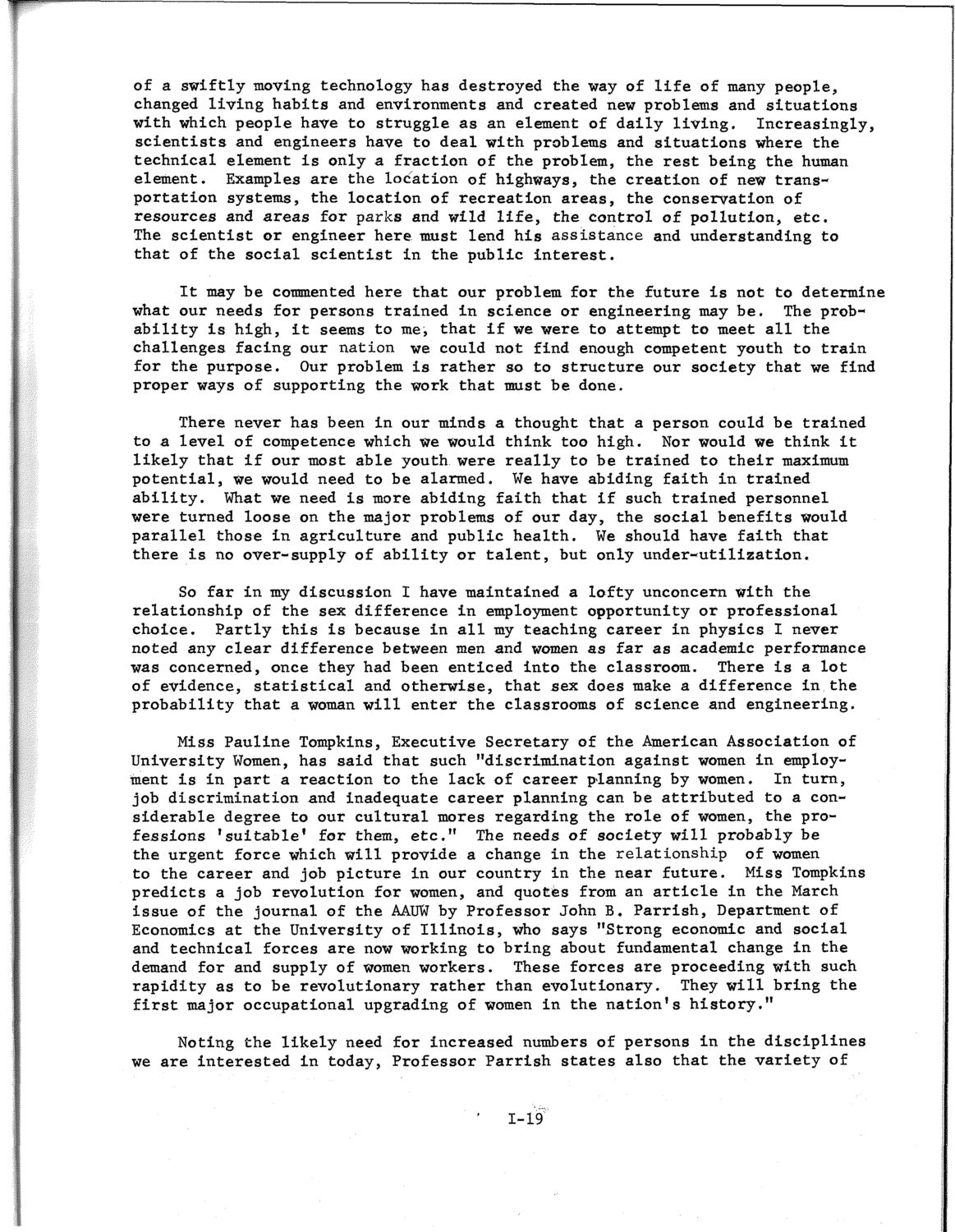| |
| |
Caption: SWE - Proceedings of the First International Conference of Women Engineers and Scientists
This is a reduced-resolution page image for fast online browsing.

EXTRACTED TEXT FROM PAGE:
of a swiftly moving technology has destroyed the way of life of many people, changed living habits and environments and created new problems and situations with which people have to struggle as an element of daily living. Increasingly, scientists and engineers have to deal with problems and situations where the technical element is only a fraction of the problem, the rest being the human element. Examples are the location of highways, the creation of new transportation systems, the location of recreation areas, the conservation of resources and areas for parks and wild life, the control of pollution, etc. The scientist or engineer here must lend his assistance and understanding to that of the social scientist in the public interest. It may be commented here that our problem for the future is not to determine what our needs for persons trained in science or engineering may be. The probability is high, it seems to me, that if we were to attempt to meet all the challenges facing our nation we could not find enough competent youth to train for the purpose. Our problem is rather so to structure our society that we find proper ways of supporting the work that must be done. There never has been in our minds a thought that a person could be trained to a level of competence which we would think too high. Nor would we think it likely that if our most able youth were really to be trained to their maximum potential, we would need to be alarmed. We have abiding faith in trained ability. What we need is more abiding faith that if such trained personnel were turned loose on the major problems of our day, the social benefits would parallel those in agriculture and public health. We should have faith that there is no over-supply of ability or talent, but only under-utilization. So far in my discussion I have maintained a lofty unconcern with the relationship of the sex difference in employment opportunity or professional choice. Partly this is because in all my teaching career in physics I never noted any clear difference between men and women as far as academic performance was concerned, once they had been enticed into the classroom. There is a lot of evidence, statistical and otherwise, that sex does make a difference in the probability that a woman will enter the classrooms of science and engineering. Miss Pauline Tompkins, Executive Secretary of the American Association of University Women, has said that such "discrimination against women in employment is in part a reaction to the lack of career planning by women. In turn, job discrimination and inadequate career planning can be attributed to a considerable degree to our cultural mores regarding the role of women, the professions 'suitable1 for them, etc." The needs of society will probably be the urgent force which will provide a change in the relationship of women to the career and job picture in our country in the near future. Miss Tompkins predicts a job revolution for women, and quotes from an article in the March issue of the journal of the AAUW by Professor John B. Parrish, Department of Economics at the University of Illinois, who says "Strong economic and social and technical forces are now working to bring about fundamental change in the demand for and supply of women workers. These forces are proceeding with such rapidity as to be revolutionary rather than evolutionary. They will bring the first major occupational upgrading of women in the nation's history." Noting the likely need for increased numbers of persons in the disciplines we are interested in today, Professor Parrish states also that the variety of 1-19
| |